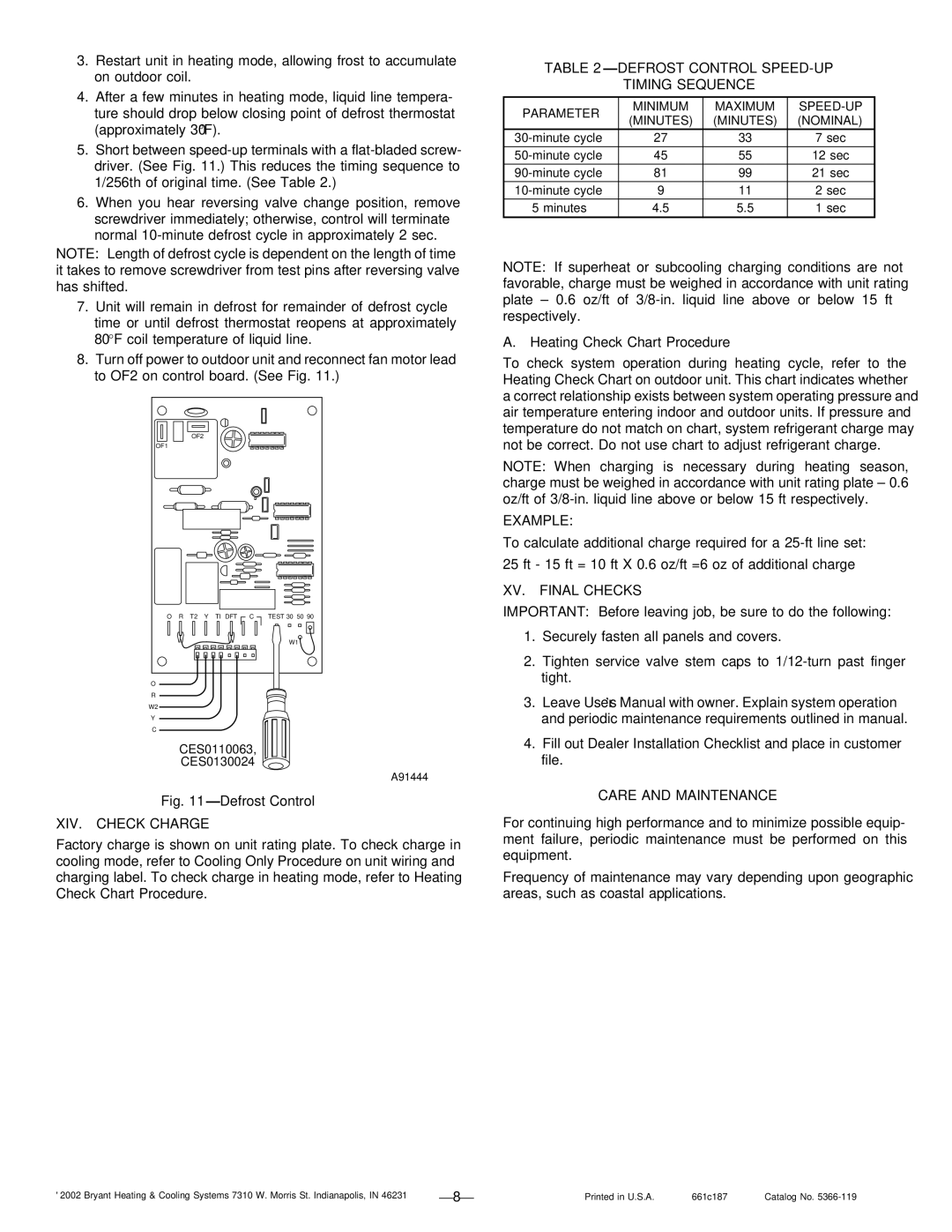661S, 661C, 661G specifications
The Bryant 661 series, comprising the models 661G, 661C, and 661S, represents a significant advance in heating and cooling technology, offering efficiency, reliability, and smart capabilities for modern homes. These models are designed to cater to various climate conditions while ensuring optimal comfort and energy savings.The Bryant 661G model is primarily a gas furnace that boasts impressive AFUE (Annual Fuel Utilization Efficiency) ratings, which can exceed 96%. This efficiency translates into substantial savings on energy bills, making it an environmentally friendly choice. The 661G features a variable-speed blower motor, which adjusts airflow to meet specific heating needs. Additionally, its dual-stage gas valve allows for enhanced comfort and efficiency, providing a quiet operation and steady temperature control throughout the home.
The Bryant 661C model stands out with its focus on air conditioning capabilities. It utilizes advanced inverter technology that allows for precise temperature control and enhanced energy efficiency. With high SEER (Seasonal Energy Efficiency Ratio) ratings, the 661C significantly reduces energy consumption during hot months. Furthermore, the model is equipped with advanced filtration systems that ensure high indoor air quality by capturing allergens and pollutants, making it an excellent choice for allergy sufferers.
Lastly, the Bryant 661S is a comprehensive solution combining both heating and cooling in a single unit. This model is designed for versatility and efficiency, making it suitable for various residential applications. It offers smart technology integration, allowing homeowners to control their HVAC systems remotely via smartphone apps. The 661S's high-efficiency heat pump technology provides substantial savings in energy costs while maintaining optimal comfort year-round.
All three models feature durable construction with corrosion-resistant materials, ensuring longevity and minimal maintenance. The Bryant Comfort Shield technology enhances operational reliability by providing protection against environmental stressors. Moreover, the ease of installation and compatibility with existing Bryant systems adds to their appeal.
In conclusion, the Bryant 661G, 661C, and 661S models combine modern technology with energy-efficient performance, making them ideal choices for those looking to improve their home comfort while reducing energy costs. With their advanced features, homeowners can enjoy a cozy living environment while contributing to a more sustainable future.

